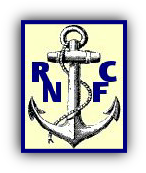
The Story of the
Holton Heath, Dorset, UK



Cordite - What is it?
The material was developed in France and England in the late 1880s and 1890s and the early forms consisted of two main ingredients – Guncotton and Nitroglycerine. Both of these were made at the RNCF as well as the Sulphuric Acid and Nitric acid needed for their production, together with a small amount of mineral jelly. This was known as Mk 1 or MD Cordite.
Solid guncotton was mixed by hand initially with the quite viscous liquid nitroglycerine. This paste was transferred to an incorporator – a large mixing machine - and the solvent Acetone was added and, later, about 5% mineral jelly completing the recipe. Mixing then continued.
The mixture needed to be gelatinised by hot rolling, made into sheets and these pressed into ‘cheeses’ which could be loaded into a hydraulic press and extruded through the required ‘die’ to give long cylindrical lengths of “cord’ite” looking somewhat like spaghetti. The material was dried on trays in Acetone Recovery Stoves and finally batches were blended, packed and dispatched, mainly by barge, to the filling stations.

Cordite is what took over in many cases from Gunpowder as the chemical producing a large amount of gas to send a shell from a Naval gun and it is termed a ’propellant’.
Modifications to the process
In 1928 modifications were made to the manufacturing methods still using nitroglycerine but using Nitrocellulose in a water pulp form – a paper based material instead of cotton – and the addition of Carbamite as a chemical stabilizer / gelatiniser. This was known as SC Cordite.
It was thoroughly mixed and pumped to sheeting tables where the water was removed under vacuum and pressing. This was dried and then hot rolled, cut into sheets and compacted into ‘cheeses’ ready for pressing through the appropriate dies.


Burning Rates
Burning rates of propellants depend on the available surface area.
Different types can range from 1 or 2 mm diameter cords, 5 mm slotted tube or 5 mm hollow tube and these can be cut into small lengths or bundled together in silk bags tied with silk thread even up to bundles of 14” diameter for large naval guns.
Specialist cordites can be multitubed of 7 mm diameter with six or seven small holes through it or larger 2” charges with a star shaped central hole down which burning takes place, 4” diameter cruciform charges with four multi-surfaced lugs and even to charges 11 feet long and 10” in diameter with a clover leaf shaped hollow centre produced in one extrusion on an enormous press.

Quick Links